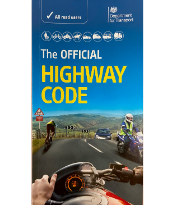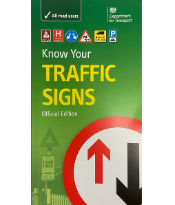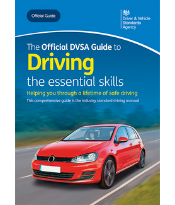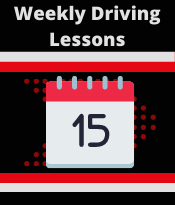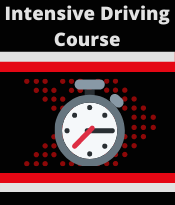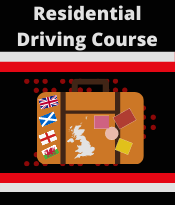On your journey to gaining your driving licence, you will need to pass two tests; the theory test and the practical driving test. Both of these tests can be challenging in their own way, but today we’ll be focussing on how to pass your theory test. The theory test should be treated like any other exam, meaning that you’ll need to make sure that you get in plenty of revision. This may leave you wondering, how do I pass?
Whether you’re sitting your theory test for the first time, or are having another attempt, there are lots of steps that you can take to help you pass. We’ve created this handy guide to help you on your way, covering everything you need to know to pass your theory test with flying colours.
When Was The Theory Test Introduced?
The theory test was introduced on the 1st of July 1996 as a written exam. Before this, learner drivers would be asked questions on the Highway Code by examiners during their practical test. This meant that all learner drivers now had to pass both the theory test and practical driving test to acquire their full UK driving licence.
The hazard perception aspect of the theory test was introduced in 2002. This tests candidates’ ability to spot and recognise a developing hazard in a series of video clips.
What Does The Theory Test Include?
The theory test consists of two separate sections; multiple-choice and hazard perception.
- Multiple Choice:
- The multiple-choice section of the theory test consists of 50 questions which focus on a range of topics, from road signs, to hazard awareness and the rules of the road. You will need to answer at least 43 out of 50 correctly to pass this section of the test.
- Hazard Perception:
- The hazard perception section of the test is made up of 14 video clips, showing everyday road scenarios from the perspective of a driver. Each video clip includes at least one developing hazard, which you will have to identify by clicking a mouse. You will need to score at least 44 out of 75 to pass.
You must pass both sections of the theory test. If you fail either one of the multiple-choice or hazard perception section, you will fail the entire theory test. This means that you will have to revise and prepare for both aspects.
How To Pass Your Theory Test
How To Pass The Multiple Choice Section
Getting Started
The questions in the multiple-choice section of the theory test are all based on three DVSA books; the Highway Code, Know Your Traffic Signs and Driving: The Essential Skills. You should have a strong understanding to know the information in these books, especially the Highway Code, as this contains all of the rules and information you’ll need. The purpose of the Highway Code is to ensure that all road users, including drivers, cyclists, pedestrians and other road users can travel safely.
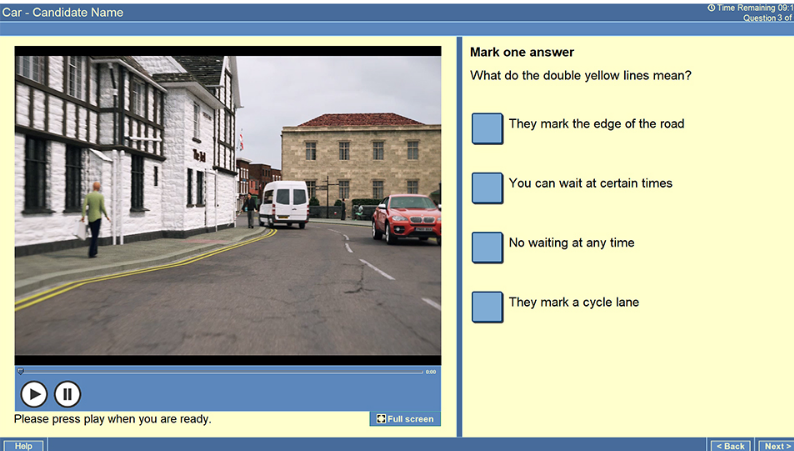
What To Expect
The multiple-choice section of the theory test consists of 50 questions, and you will have 57 minutes to answer them. You will be shown some example questions and instructions before the start of the test. This will help you to become familiar with the format and layout of the test. Once you have taken the time to review the instructions and example questions, you can start the test.
When the test begins, be sure to read each question carefully, and make sure that you understand what is being asked. You will be able to go back and change your answer at any time during the test before your time runs out. There is also the option to flag any questions that you are unsure of. This allows you to quickly identify any questions, you were unsure of, and make necessary changes.
The layout of the questions may change slightly based on what is being asked. This will involve a variety of facts, figures, and different photos of road signs and situations. In addition to the standard test questions, you will be presented with a case study that tends to describe a short story or potential real-life situation. Case studies can cover a range of different topics and aim to test your ability to think logically in potential real-life situations.
How To Prepare For Your Theory Test
There are hundreds of different questions which may appear in the multiple-choice section for the theory test, so it’s important to ensure that you’re fully prepared. There are lots of different ways that you can revise for your theory test, from useful handbooks to fancy mobile apps.
The Highway Code
The Highway Code is available in most book stores and can be found for free online. It’s important to ensure that you have a good grasp of the Highway Code, as this is one of the books that many of the questions are taken from. The Highway Code contains all the rules of the road, to help ensure that all road users travel safely and responsibly.
Know Your Traffic Signs
The Know Your Traffic Signs book can be found in most book stores and can be found for free online. This book contains all the information you need to know about different UK road signs, highlighting their use and meaning.
The Official DVSA Guide To Driving – The Essential Skills Book
This book is useful for both learners and experienced drivers alike. It is packed full of advice that will help you stay safe on UK roads and contains important information on developing your driving skills. Many of the questions in the theory test are taken from this book.
Driving Test Success
We recommend the use of Driving Test Sucess’ theory test resources. Choose from Driving Test Success Anytime, an online web application, or their 4 in 1 theory test mobile app. Both resources come packed full of information and guides to help you pass your theory test. Test your knowledge with mock tests and quizzes, or prepare for the hazard perception section with interactive clips.
These learning resources are the best way to prepare for your theory test and to help you pass with flying colours. If you have any questions about the theory test, be sure to ask your driving instructor for help, or contact us.
How To Pass The Hazard Perception Section
What To Expect
Once you’ve completed the multiple-choice section of the theory test, you will have to tackle the hazard perception test. This part of the test consists of 14 one-minute video clips showing different road scenarios. Each clip will contain developing hazards, which you will have to recognise and identify in good time. Be aware that one of the clips will contain two developing hazards.
There is a difference between a hazard and a developing hazard. A developing hazard requires you to take action. Examples of a developing hazard include a cyclist swerving to avoid a pothole or a vehicle reversing onto the road. This could result in you having to take action, either by changing your speed or road position. A hazard, on the other hand, is something you should be aware of and consider the risk, but not have to take immediate action over.
Once you have recognised and identified a developing hazard, you will need to click with your mouse. Each hazard that appears on-screen is worth 5 points, and you’ll score higher the quicker you spot them. You will not be marked if you click at the wrong time during each clip, however, you may fail a clip if the system believes that you are clicking in a pattern. There will be a ten-second window between each clip for you to prepare.
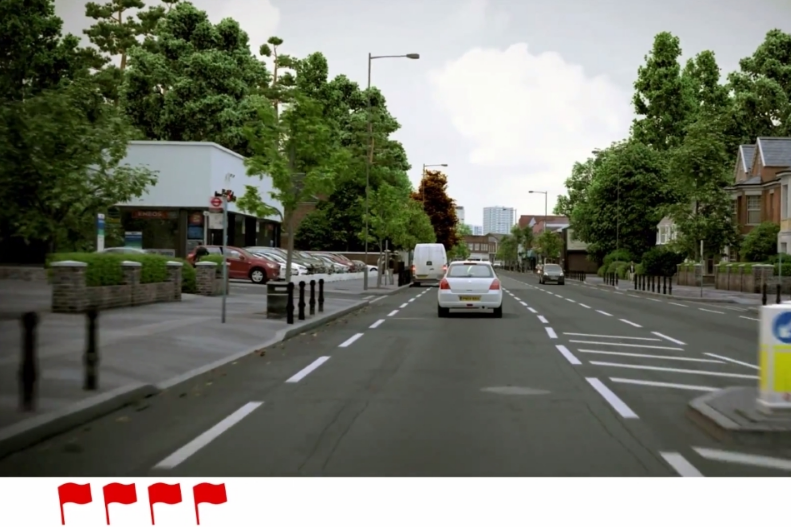
What Types of Hazards Will I Encounter?
The 14 video clips shown in the hazard perception test can vary greatly, meaning that you will likely encounter a range of developing hazards. This may include children stepping onto the road suddenly, cyclists, other vehicles braking suddenly, emergency vehicles or poor visibility. Therefore, you must take plenty of time to prepare and revise for this section of the test.
How To Prepare For The Hazard Perception Test
The hazard perception test is just as important as the multiple-choice section of the theory test. Remember that you will need to pass both sections to pass your theory test. This means that you will have to ensure that you fully understand the format of the test and are familiar with the types of hazards that you may encounter.
The best way to prepare for the hazard perception test is to practice with different clips. You can practice a variety of clips with either Driving Test Success Anytime, or the 4 in 1 Theory App. The clips in these applications will show a wide range of different roads and scenarios. This will give you plenty of experience to build your confidence ahead of your theory test.
Revise, Revise, Revise
Without a doubt, the best way to prepare for your theory test is to revise, revise, revise. The theory test should be treated like any other examination, meaning that you will need to ensure that you are fully prepared. Passing the test without the appropriate amount of revision is highly unlikely, and you may face long waiting times to rebook if you fail. We recommend taking the time to create a study plan and taking the time to revise whenever you can. Give yourself plenty of time and avoid last-minute cramming. If you follow this guide, you should be able to pass your theory test with flying colours.
If you have any questions about the theory test, take the time to speak with your driving instructor, or contact us, we’d be happy to help.
What Should I Do On the Day Of My Theory Test?

Ensure You’re Fully Prepared
As your test date approaches, it’s important to ensure that you have the correct date, time, and location. You definitely don’t want to miss your test after all of your hard work. Remember to take your provisional licence with you. You’ll need this to sit your test.
Once you arrive at the test centre, you will not be able to take in any personal items to the test room. You will be provided with a locker to store your items and keep them safe until after your test.
Manage Your Time Effectively
Each section of the theory test is designed to give you plenty of time to answer each question. It’s important that you use this time effectively and don’t rush. You will have 15 minutes at the start of your test to prepare and familiarise yourself with the format. There will be a three-minute break between each section which allows you some time to relax.
Before you start the hazard perception section, you will have the opportunity to watch a clip explaining how the test works. Use this time to familiarise yourself with the layout and format. This will also allow you to get a feel for the types of developing hazards you may encounter during the test.
Take The Time To Review Your Answers
You should take the time to review your answers before completing the multiple-choice section. Especially any questions that you are unsure of. Remember to make use of the ‘flag feature’ during the test. This will allow you to quickly identify any answers that you would like to review at the end of your test.
Relax and Enjoy The Experience
The theory test is designed to allow you plenty of time to answer all of the questions. You will have 57 minutes for the multiple-choice section of the test. This should give you more than enough time to answer all 50 questions and review your answers. Unfortunately, you won’t be able to review your answers in the hazard perception section, as this replicates real-life scenarios. With all the revision and hard work you’ve put into studying and preparing for the test, we’re sure you will be more than ready.
I Passed! What Happens Next?
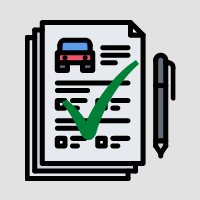
Once you’ve passed your theory test, you’re well on your way to achieving your full UK driving licence. If you’ve already started driving lessons, be sure to tell your instructor. If they feel that you’re ready, then you’ll be able to book your practical driving test.
Alternatively, if you chose to do your theory test before starting lessons, its time to get behind the wheel for the first time. We have a range of available courses to choose from weekly driving lessons to our intensive and residential courses. All of our courses are available for both manual and automatic driving lessons. Be sure to get in touch, or book online today.
Remember that your theory test pass certificate is only valid for two years. Be sure to book your test within this time or, you will need to sit your theory test again.


